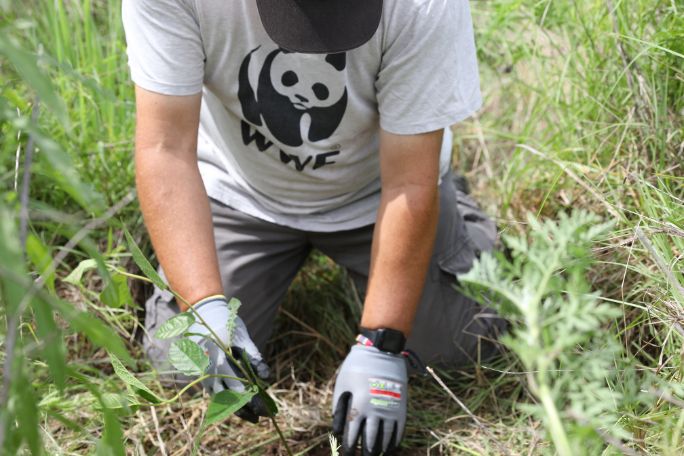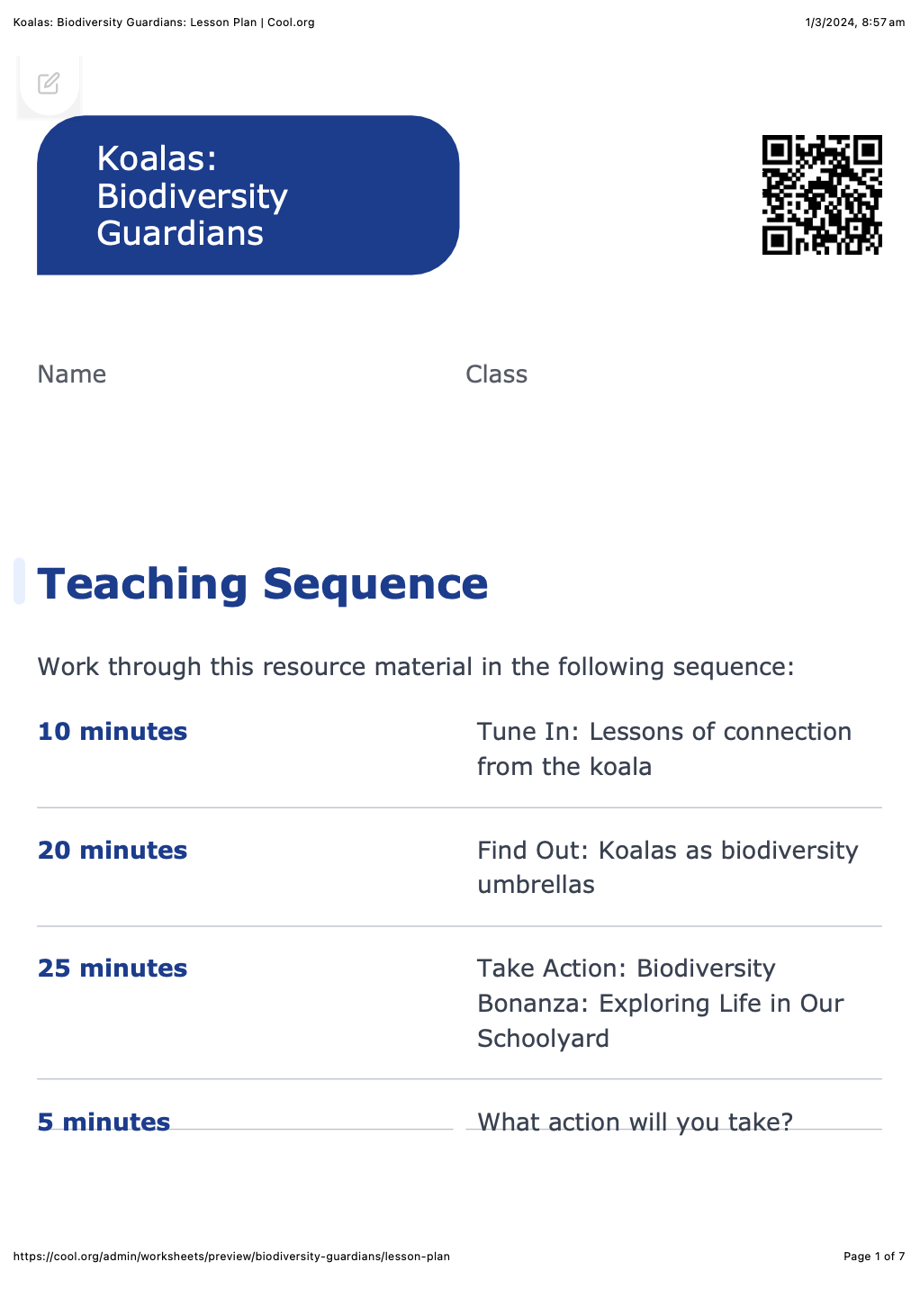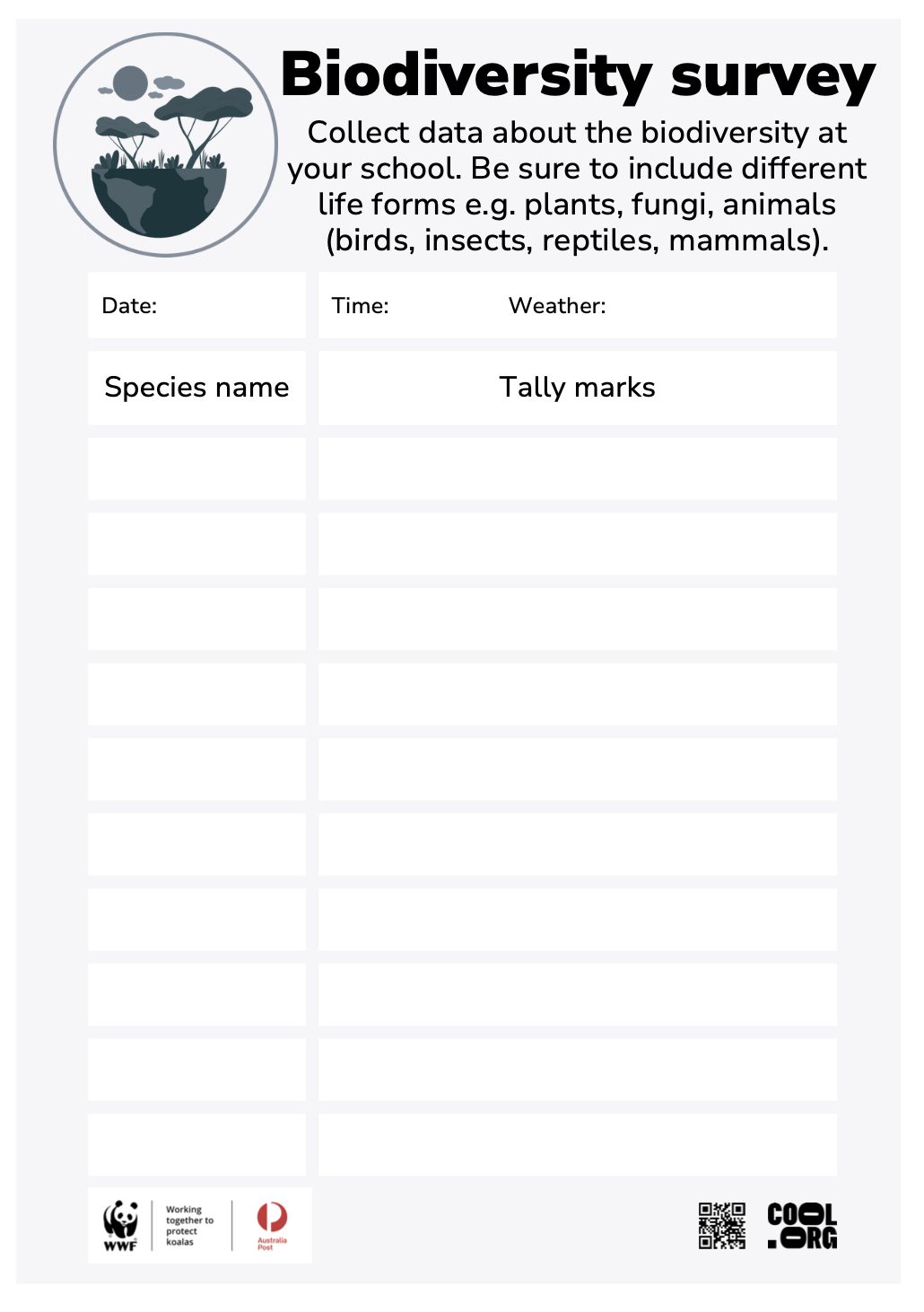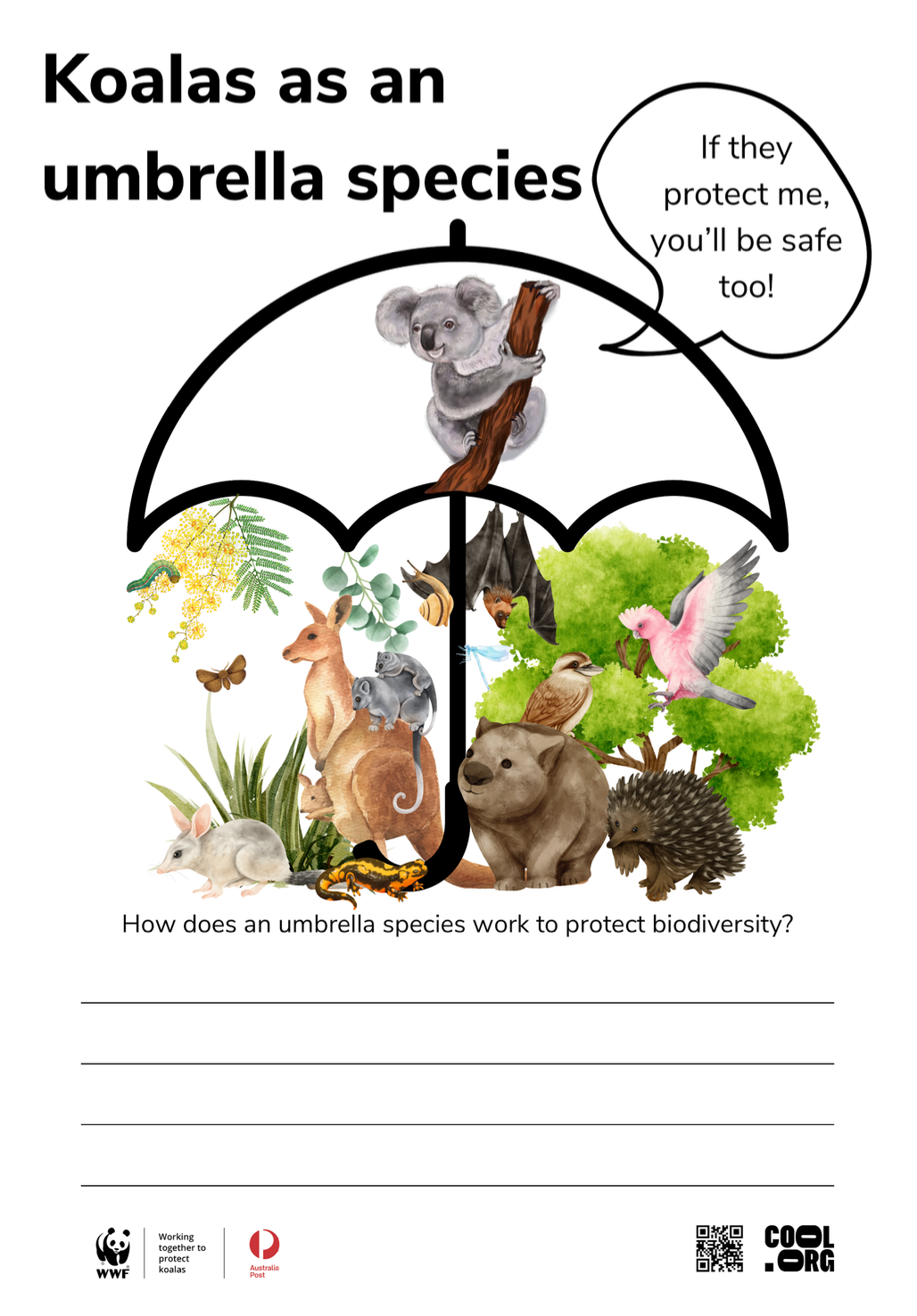Lesson summary
Students will investigate how scientific knowledge is used by individuals and communities to identify problems, consider responses and make decisions by assigning their own umbrella species to their school habitat and undertaking a biodiversity survey of their schoolyard.
Learning intentions:
Students will...
- understand the importance of biodiversity by undertaking a biodiversity survey of their schoolyard.
Success criteria:
Students can...
- understand the importance of biodiversity
- conduct a scientific survey and identify plants and animals in their schoolyard
- understand the interconnectedness of living things
- understand how umbrella species function to protect broader biodiversity.
Lesson guides and printables
Curriculum links
Select your curriculum from the options below.
Lesson details
Skills
This lesson is designed to build students’ competencies in the following skills:
- creative thinking
- critical thinking
- collaboration
- communication
- community engagement
- curiosity
- ethical understanding
Curriculum Mapping
Australian Curriculum (v9.0) content description:
Year 5 Science:
- investigate how scientific knowledge is used by individuals and communities to identify problems, consider responses and make decisions (AC9S5H02)
- construct and use appropriate representations, including tables, graphs and visual or physical models, to organise and process data and information and describe patterns, trends and relationships (AC9S5I04).
Relevant parts of Year 5 achievement standards: Students construct tables and graphs to organise data and identify patterns in the data.
NSW Curriculum: ST3-4LW-S
General capabilities: Critical and Creative Thinking, Ethical Understanding, Literacy, Numeracy, Personal and Social Capability
Cross-curriculum priority: Aboriginal and Torres Strait Islander Histories and Cultures, Sustainability
UN Sustainable Development Goals
UN SDG 15: Protect, restore and promote sustainable use of terrestrial ecosystems, sustainably manage forests, combat desertification, and halt and reverse land degradation and halt biodiversity loss
- Target 15.5: Take urgent and significant action to reduce the degradation of natural habitats, halt the loss of biodiversity and, by 2020, protect and prevent the extinction of threatened species
Resources Required
- Clipboard for biodiversity survey
- Device to share webpages and video with the class
- Relevant field guides (if available) or access to devices to look up species after survey
- Pens/pencils
- Printed worksheets
Additional Info
This lesson has been created in partnership with WWF-Australia and made possible thanks to its proud supporter, Australia Post.
In 2022, koalas on Australia’s east coast were officially listed as an endangered species, after dramatic population decline. Habitat destruction, climate change and extreme weather events including bushfires and floods have had a significant impact on koalas.
As one of Australia’s most trusted conservation organisations, WWF is working tirelessly to turn this tragedy around with Australia Post joining them in their mission to double koala numbers across eastern Australia by 2050.
Level of teacher scaffolding: Medium - teacher to facilitate class discussion and supervise biodiversity survey in the school yard.
Related Professional Learning
Investigate How Animals are Impacted by Their Environment
Almost 70% of 7-12 year olds have heard about climate change. For this age group, environmental concerns rank above terrorism. This course will help inspire your students to feel optimistic about their future by investigating how animals adapt to climate change. You’ll discover how to teach curriculum-aligned lessons using WWF-Australia’s Earth Hour.




Welcome back!
Don't have an account yet?
Log in with:
Create your free Cool.org account.
Many of our resources are free, with an option to upgrade to Cool+ for premium content.
Already have an account?
Sign up with:
By signing up you accept Cool.org's Terms and Conditions(Opens in new tab) and Privacy Policy(Opens in new tab).